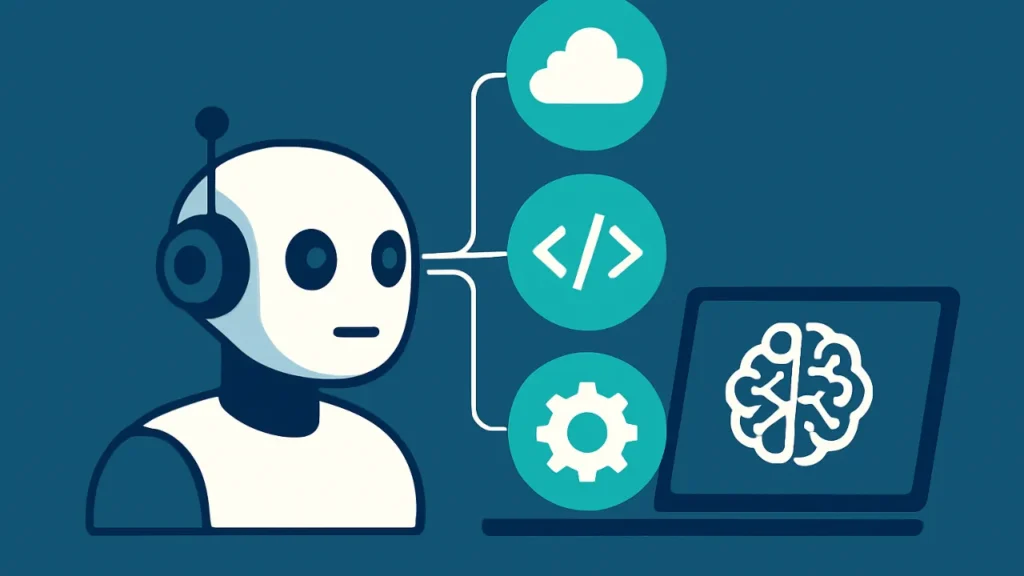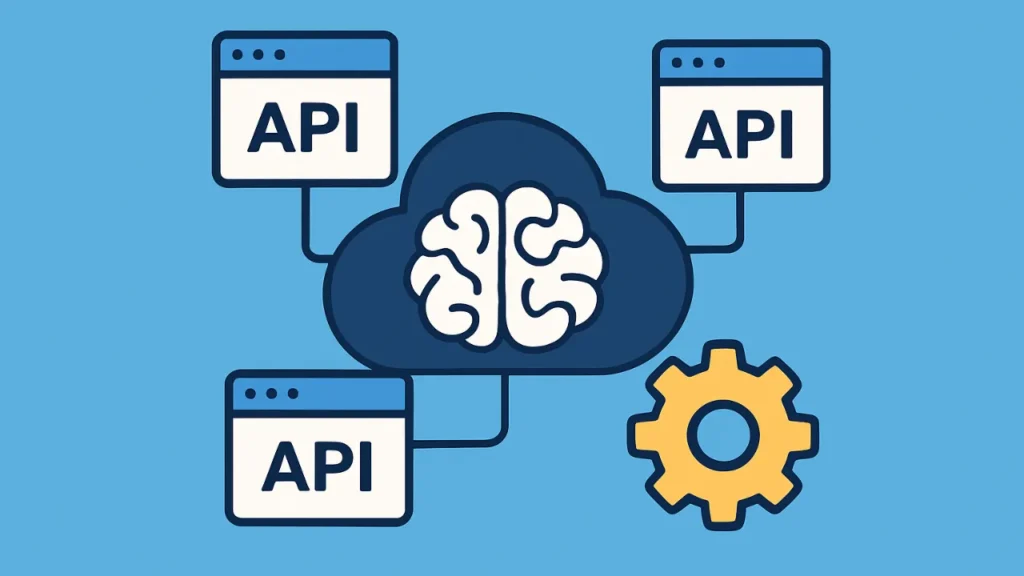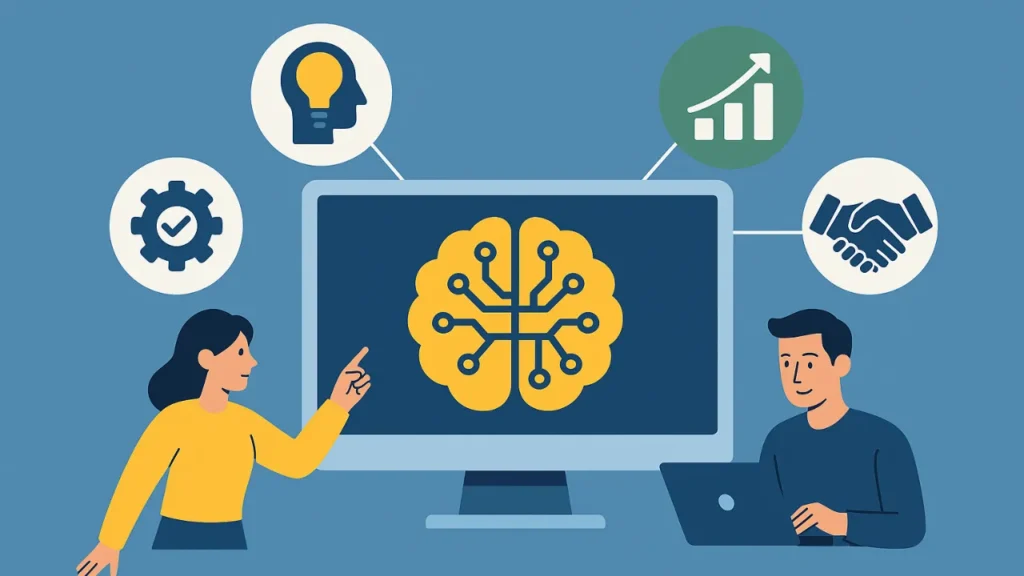Application programming interfaces, or APIs, are revolutionizing our approach to creativity and marketing. The reality is more positive, as 62% of marketers think AI will improve their skills rather than replace them, despite worries about AI (artificial intelligence) software replacing jobs.
They believe that AI fosters creativity and increases the value of those who use it. Anyone who wants to use AI’s creative potential in conjunction with human talent must select the appropriate AI APIs from a wide range of fascinating options.
There are many different APIs available, each with their own advantages, whether the purpose is to process natural language or create videos. We’ve put together a list of the best AI APIs after doing extensive research. These cutting-edge technological tools are ideal for increasing project speed and creativity.
To avoid AI detection, use Undetectable AI. It can do it in a single click.
Table of Contents
AI APIs

The technology known as an artificial intelligence application programming interface, or AI API, enables programmers to add artificial intelligence capabilities to applications.
By acting as linkages between AI features and different applications, these APIs help them more effectively complete difficult tasks like sentiment analysis, spam filtering, and facial recognition.
Put more simply, AI APIs give users access to pre-trained machine learning models that can be incorporated into current systems to enhance the intelligence and capabilities of applications without requiring a high level of user expertise in AI.
Best AI APIs

Let’s examine the best AI APIs and their areas of strength.
Tavus API
The Phoenix model-powered Tavus API is a leading API that makes video production much easier by integrating sophisticated text-to-speech features straight into apps.
Without having to construct intricate video systems themselves, developers can white-label Tavus’ technology to enable their users to produce customized video content straight from scripts. This API easily transforms text into captivating video content by producing incredibly lifelike videos with digital copies of the user.
With this smooth integration, developers can continue to concentrate on their main product while still including captivating, incredibly lifelike videos in the app’s user interface. For ultra-realism when translating into more than 30 languages, Tavus provides AI-powered voice dubbing and lip-syncing.
Imagga API
Large image collections can be handled automatically with the help of a set of image understanding and analysis technologies provided by the Imagga API. It is intended for companies that handle large amounts of visual data.
The API provides a variety of insights by analyzing images to determine their content. It also provides customization options, enabling companies to integrate the API into pre-existing applications and modify it to suit their unique requirements.
Vision AI
Applications can now analyze images and videos intelligently due to Vision AI’s use of the Cloud Vision API. Information is automatically extracted and categorized from visual content.
Tasks like object detection, facial recognition, and optical character recognition (OCR) can be completed by vision AI.
IBM Watson Speech to Text
Accurate audio-to-text transcription in several languages is possible with IBM Watson Speech to Text, an AI-powered service. Among other things, this service is intended for agent support and customer self-service.
With cutting-edge machine learning models, it provides innovative functionality, or it can be customized to meet particular use cases. Call centers, media outlets, and law firms can all use the service, which also allows for integration with pre-existing apps.
Google Cloud’s Speech to Text API
The Speech-to-Text API from Google Cloud is a tool that accurately converts audio to text by using neural network models. It can transcribe audio from both pre-recorded files and live streams, and it supports a large number of languages.
Applications in media production, customer service, and accessibility solutions can all make use of this.
Stream
The Auto Moderation API from Stream is an AI-powered tool that detects, tracks, and eliminates harmful content to improve safety and trust across digital platforms. This API adjusts to the unique context and expectations of your community using sophisticated machine learning models and configurable policies.
Any user-generated content environment that needs real-time moderation to keep a welcoming and safe environment can use it.
DeepAI API
Many creative and analytical tasks are supported by the DeepAI API, especially those involving text and image processing. In addition to improving image resolution and performing image manipulations like colorization and noise reduction, it can create images from text descriptions.
Read Also >>> How to Use AI to Automate Business Workflows in 2025?
Developers, content producers, and marketers who need visual content can use this API.
Pixray API
One of Replicate’s tools for creating images from text descriptions is the Pixray API. It is intended for developers, designers, and artists who need to generate images quickly and with customization.
This API creates detailed images that correspond with the provided prompts by using methods like CLIP-guided GAN imagery and Perception Engines.
Microsoft Azure Cognitive Services API
Azure Cognitive Services from Microsoft is a set of APIs that let apps do things like understand languages and convert text. It’s made to improve user experiences in a variety of applications, from speech and vision to emotion and sentiment detection.
This should require little coding knowledge and be applicable to a variety of industries.
Amazon AI API
As a component of AWS (Amazon Web Services), the Amazon AI API offers a range of machine learning tools and services that make it easier to incorporate AI capabilities into different applications.
These APIs are made to improve applications by adding sophisticated features like image analysis, speech recognition, and natural language understanding. Numerous industries, including healthcare, finance, media, and customer service, use Amazon AI APIs.
Clarifai API
Developers can incorporate image and video recognition features into their current applications with the Clarifai API. This API classifies, detects, and segments images and videos in real time using machine learning models.
Personalized customer experiences, security monitoring, and content moderation are some of its applications.
OpenAI API
Several AI models created to manage tasks involving the comprehension and production of human language are available through the OpenAI API. Language translation, human-like text generation, and even the creation of content like articles, poetry, and code are just a few of the many tasks this API can perform.
Developers wanting to integrate AI technology into products that need task automation, machine learning, and natural language processing can use it.
Aylien
The Aylien AI API uses natural language processing (NLP) to assist in the analysis of NEWS text. It can identify languages in text, identify entities, and detect sentiments. Text classification, sentiment analysis, and summarization are important features.
For essential use, the cost is free; for heavy use, there are customized plans available. Its advantages include its good documentation, performance, and ease of use.
Wit AI
Natural language processing (NLP) is the focus of the Wit.AI API. It aids programmers in creating applications that comprehend spoken language. Chatbots, voice assistants, and automated customer support are all made possible by Wit.AI.
Entity extraction, intent recognition, and speech-to-text conversion are important features. Wit.ai has no cost. The simplicity of use, active community, and Facebook Messenger integration are among Wit.AI’s advantages.
Filestack
Developers can incorporate intelligent features into their apps with the aid of Filestack’s AI API. It has strong image and video processing features. Image recognition is one important feature. This enables apps to automatically recognize and classify objects in images.
This feature facilitates visual searches and photo library organization. Facial recognition is another feature of Filestack’s AI API that is useful for user security and verification. Images can also be altered via the API.
Images can be cropped, resized, and optimized for various devices. AI is used in these changes to guarantee excellent outcomes with minimal developer work. The auto-preset feature of Filestack was just released. Without requiring you to manually set them, this feature determines the necessary improvements for your images.
Advantages of Using Best AI APIs

There are numerous benefits to using best AI APIs, including increased efficiency, innovation in a variety of fields, and streamlined operations.
Saves Time for Developers
By offering ready-to-use AI functionalities that are simple to incorporate into current systems, AI APIs significantly reduce the amount of time needed for development. It is not necessary for developers to create intricate AI models from the ground up.
Alternatively, they can quickly add features like image recognition, language translation, or personalized recommendations by utilizing pre-built models. This speeds up the development cycle and gets products to market sooner by allowing developers to concentrate on other areas of their projects.
Possibilities for Automation
Businesses can streamline operations and minimize manual labor by utilizing AI APIs, which present numerous automation opportunities.
AI APIs assist in automating repetitive tasks, such as processing invoices and using chatbots to automate customer inquiries. Human resources can now be used for more strategic endeavors.
Scalability
As companies expand, these APIs enable them to manage larger data volumes and increasingly intricate procedures. AI APIs facilitate smooth operation scaling, whether it’s handling bigger datasets for analytics or accommodating more users at once on a platform.
Businesses can grow their capabilities without sacrificing user experience or performance due to this scalability.
Adaptive Education
Through constant learning and improvement from fresh data, AI APIs gradually modify their operations without the need for human involvement. As patterns shift and new data becomes available, this feature of dynamic learning guarantees that the applications continue to be effective and efficient.
Predictive analytics APIs, for instance, improve their forecasts over time by adjusting them in light of the most recent data trends. Similar to this, personalized recommendation engines modify their outputs to conform to changing user preferences, guaranteeing that the suggestions remain interesting and pertinent.
FAQs About Best AI APIs
What are AI APIs?
AI APIs are application programming interfaces that allow developers to integrate artificial intelligence capabilities into their applications. These APIs enable tasks like natural language processing, image recognition, and sentiment analysis.
What are some use cases for AI APIs?
AI APIs can be used for various applications, including chatbots, text summarization, and speech-to-text conversion. They can also assist in automating tasks and enhancing user experience in different sectors.
What is the difference between machine learning and AI APIs?
Machine learning refers to the techniques and algorithms that allow computers to learn from data, while AI APIs are the tools that provide access to these techniques, enabling developers to build applications without needing to understand the underlying machine learning models.
Can you give examples of popular AI API providers?
Some of the top AI API providers include OpenAI, Google Cloud, Cohere, and Anthropic. These platforms offer various AI services and pre-trained models to facilitate the development of AI-powered applications.
What are large language models (LLMs)?
Large language models are sophisticated AI models designed to understand and generate human-like text. They are used in applications like conversational AI, text generation, and other natural language understanding tasks.
How can I integrate AI APIs into my applications?
To integrate AI APIs, you typically need to sign up for an API key from a provider, consult the API documentation for instructions, and implement the necessary code to connect your application with the API endpoint.
What are some advanced AI capabilities offered by APIs?
Advanced AI capabilities offered by APIs include deep learning, computer vision, and generative AI functionalities like text-to-image generation and code generation. These features allow developers to create more sophisticated AI applications.
Are there pre-trained models available in AI APIs?
Yes, many AI APIs provide access to pre-trained models, which can be used for specific tasks without the need for extensive model training. This helps developers save time and resources when building AI-powered applications.
What is the role of natural language processing (NLP) in AI APIs?
NLP is a critical aspect of AI APIs, enabling them to process and analyze human language. This includes tasks like sentiment analysis, text summarization, and conversational AI, which enhance the capabilities of applications that require language understanding.
Conclusion: Best AI APIs
Numerous industries are experiencing exciting innovations due to the adaptability and wide range of applications of AI APIs. There is an AI API that can satisfy your needs, whether you want to automate processes, use data for predictive analytics, or incorporate real-time AI-driven interactions.
The many features of AI APIs can significantly improve your end-user experience by giving customers a distinctive and engaging means of interacting with your company.


